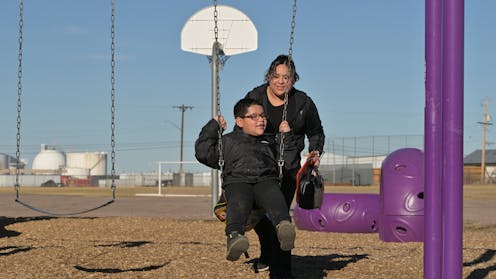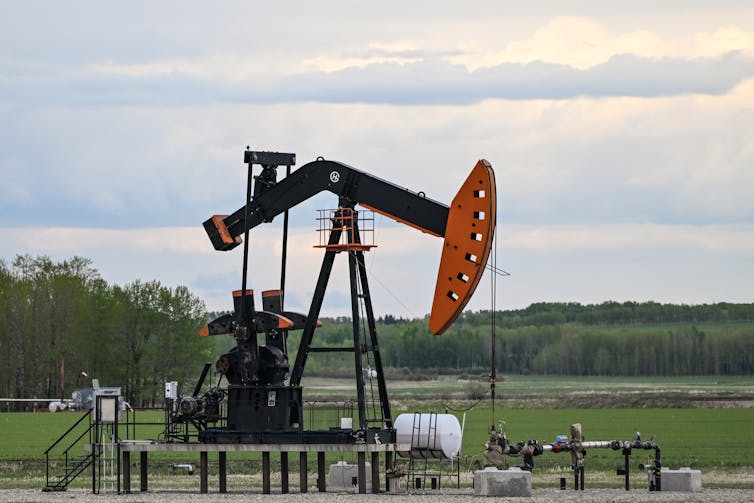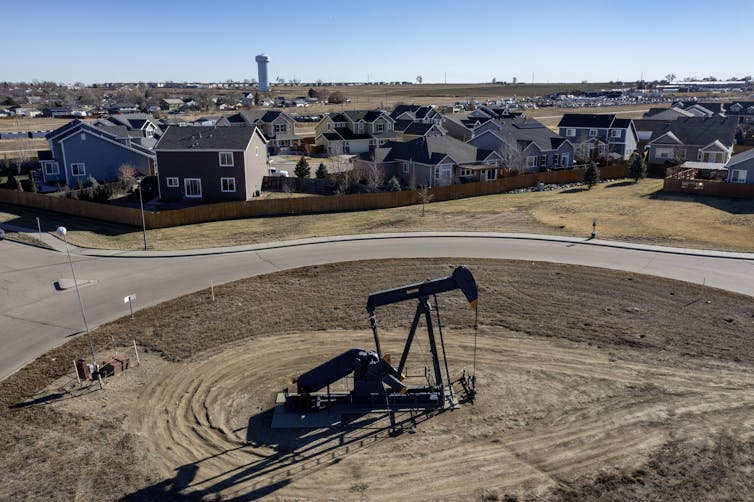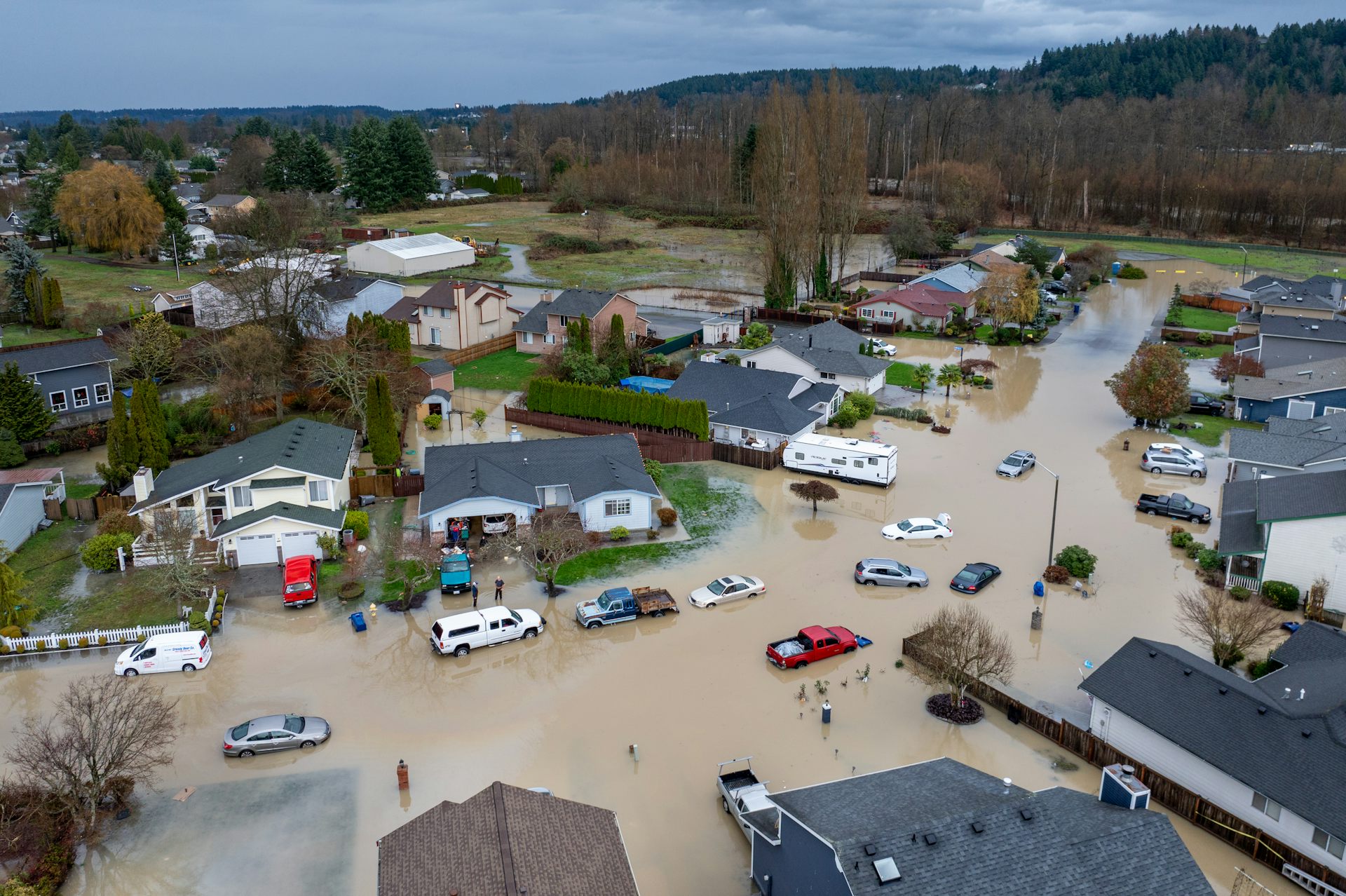Children living near oil and gas wells face higher risk of rare leukemia, studies show
As overall cancer rates in the US decline, childhood acute lymphocytic leukemia continues to rise.

Acute lymphocytic leukemia is one of the most commonly diagnosed cancers in children, although it is rare. It begins in the bone marrow and rapidly progresses.
Long-term survival rates exceed 90%, but many survivors face lifelong health challenges. Those include heart conditions, mental health struggles and a greater chance of developing a second cancer.
Overall cancer rates in the U.S. have declined since 2002, but childhood acute lymphocytic leukemia rates continue to rise. This trend underscores the need for prevention rather than focusing only on treatment for this disease.
A growing body of literature suggests exposure to the types of chemicals emitted from oil and natural gas wells increases the risk of developing childhood acute lymphocytic leukemia.

We are environmental epidemiologists focused on understanding the health implications of living near oil and natural gas development operations in Colorado and Pennsylvania. Both states experienced a rapid increase in oil and natural gas development in residential areas beginning in the early 21st century. We’ve studied this issue in these states, using different datasets and some different approaches.
2 studies, similar findings
Both of our studies used a case-control design. This design compares children with cancer, known as cases, with children without cancer, known as controls. We used data from statewide birth and cancer registries.
We also used specialized mapping techniques to estimate exposure to oil and natural gas development during sensitive time windows, such as pregnancy or early childhood.
The Colorado study looked at children born between 1992 and 2019. The study included 451 children diagnosed with leukemia and 2,706 children with no cancer diagnosis. It considered how many oil and natural gas wells were near a child’s home and how intense the activity was at each well. Intensity of activity included the volume of oil and gas production and phase of well production.
The Colorado study found that children ages 2-9 living in areas with the highest density and intensity wells within eight miles (13 kilometers) of their home were at least two times more likely to be diagnosed with acute lymphocytic leukemia. Children with wells within three miles (five kilometers), of their home bore the greatest risk.
The Pennsylvania study looked at 405 children diagnosed with leukemia between 2009 and 2017 and 2,080 children without any cancer diagnosis. This study found that children living within 1.2 miles (two kilometers) of oil and natural gas wells at birth were two to three times more likely to be diagnosed with acute lymphocytic leukemia between ages 2 to 7 than those who lived farther than 1.2 miles away.
The risk of developing leukemia was more pronounced in children who were exposed during their mother’s pregnancy.
The results of our two studies are also supported by a previous study in Colorado published in 2017. That study found children diagnosed with acute lymphocytic leukemia were four times more likely to live in areas with a high density of oil and natural gas wells than children diagnosed with other cancers.
Policy implications
To extract oil and natural gas from underground reserves, heavy drilling equipment injects water and chemicals into the earth under high pressure. Petroleum and contaminated wastewater are returned to the surface. It is well established that these activities can emit cancer-causing chemicals. Those include benzene, as well as other pollutants, to the air and water.
The U.S. is the world’s largest producer of oil and natural gas. There are almost 1 million producing wells across the country, and many of these are located in or near residential areas. This puts millions of children at increased risk of exposure to cancer-causing chemicals.
In the U.S., oil and natural gas development is generally regulated at the state level. Policies aimed at protecting public health include establishing minimum distances between a new well and existing homes, known as a setback distance. These policies also include requirements for emission control technologies on new and existing wells and restrictions on the construction of new wells.
Setbacks offer a powerful solution to reduce noise, odors and other hazards experienced by communities near oil and gas wells. However, it is challenging to establish a universal setback that optimally addresses all hazards. That’s because noise, air pollutants and water contaminants dissipate at different rates depending on location and other factors.
In addition, setbacks focus exclusively on where to place oil and natural gas wells but do not impose any restrictions on releases of air pollutants or greenhouse gases. Therefore, they do not address regional air quality issues or mitigate climate change.

Furthermore, current U.S. setback distances range from just 200 feet to 3,200 feet. Our results indicate that even the largest setback of 3,200 feet (one kilometer) is not sufficient to protect children from an increased leukemia risk.
Our results support a more comprehensive policy approach that considers both larger setback distances and mandatory monitoring and control of hazardous emissions on both new and existing wells.
Future research
More research is needed in other states, such as Texas and California, that have oil and natural gas development in residential areas, as well as on other pediatric cancers.
One such cancer is acute myeloid leukemia. This is another type of leukemia that starts in bone marrow and rapidly progresses. This cancer has exhibited a strong link to benzene exposure in adult workers in several industries, including the petroleum industry. Researchers have also documented a moderate cancer link for children exposed to vehicular benzene.
It remains unclear whether benzene is the culprit or if another agent or combination of hazards is an underlying cause of acute myeloid leukemia.
Even though questions remain, we believe the existing evidence coupled with the seriousness of childhood acute lymphocytic leukemia supports enacting further protective measures. We also believe policymakers should consider the cumulative effects from wells, other pollution sources and socioeconomic stressors on children and communities.
Read more of our stories about Colorado and Pennsylvania.
Lisa McKenzie receives funding from the American Cancer Society and the University of Colorado Cancer Center.
Nicole Deziel receives funding from the American Cancer Society, the National Institutes of Health, and the Yale School of Public Health.
Read These Next
West Coast levee failures show growing risks from America’s aging flood defenses
Levees protect more than 7 million buildings in the US today, yet they got a D-plus grade in 2025. A…
LA fires showed how much neighborliness matters for wildfire safety – schools can do much more to te
Managing fire risk is about more than regulations and rules. It’s also about caring for neighbors…
Has the Fed fixed the economy yet? And other burning economic questions for 2026
As 2026 begins, uncertainty is at the top of everyone’s mind.






